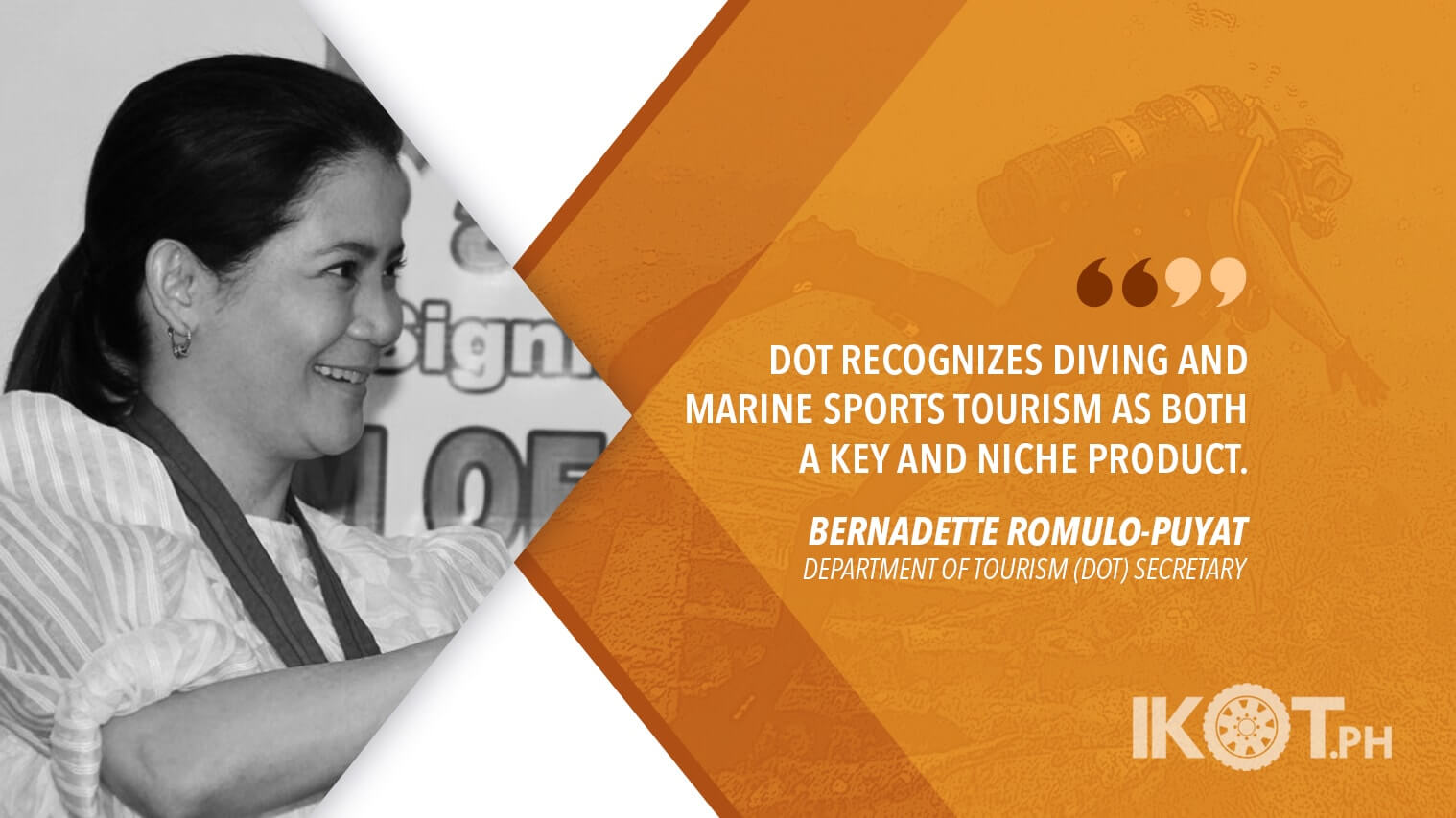The country’s first international dive expo was launched recently in a bid to further position the Philippines as a premier dive hub in Asia.
The Philippine International Dive Expo (Phidex), hosted by the Department of Tourism (DOT), was held at the Conrad Manila in Pasay City.
In her speech read by DOT Undersecretary Benito Bengzon Jr., Tourism Secretary Bernadette Romulo-Puyat boasted of the Philippines’ rich marine biodiversity as recognized by prominent dive publications and marine experts.
Citing this, Romulo-Puyat highlighted dive as a market segment in the country that DOT wants to promote and develop.
“It can deliver larger numbers of visitors, longer length of stay, and higher expenditure.”
“(The) DOT recognizes diving and marine sports tourism as both a key and niche product that can deliver larger numbers of visitors, longer length of stay, and higher expenditure along a broad spectrum of destinations and communities, as well as strong attractiveness to a wide range of country markets,” the tourism chief said in her speech.
More than 40 international dive buyers from DOT-identified markets, such as the United States, Thailand, Taiwan, Singapore, Russia, the Netherlands, the Middle East, Malaysia, South Korea, Japan, Italy, Israel, Indonesia, India, France, Denmark, China, Canada, and Belgium attended the three-day event to conduct business meetings with Philippine dive stakeholders.
At the Phidex, diving exhibits, including a 270-sqm. Philippine pavilion, featured the country’s foremost dive destinations, among them Anilao, Batangas; Camiguin; Misamis Oriental; Puerto Galera, Oriental Mindoro; Coron and Tubbataha, Palawan; Malapascua and Moalboal, Cebu; Balicasag, Bohol; and Southern Leyte.
Lynn Funkhouser, an internationally published dive photographer and author, said the country is “already a powerhouse” in dive tourism since a number of inviting underwater destinations are located in the Philippines.
“There isn’t a bad area in the Philippines.”
“There isn’t a bad area in the Philippines. You’ve got Southern Leyte, you’ve got Cebu and you’ve got Ticao Island, and that’s really, really gorgeous,” Funkhouser said.
With the diving industry already faring “very well” in the country, reminders for sustainable practices should now accompany efforts to promote destinations, she said.
Funkhouser, also an environmentalist, has visited and photographed more than 260 islands in the Philippines since 1975.
Aside from Phidex, the DOT will continue promoting new dive destinations throughout the year with familiarization tours and more campaigns to increase awareness among foreign markets on what the Philippines has to offer.
“The divers have always been considered a high-yield market. The challenge for us now is to expand the current base, which is, we estimate at about 350,000 out of the 7 million foreign visitors last year and also to make them stay longer and spend more,” Bengzon told reporters.
In Camiguin, said to be the next “top diving destination in Asia,” the numbers of diver-tourists have already grown as accredited dive shops in the island have also increased.
“For Camiguin, we are very ready, we have six PCSSD (Philippine Commission on Sports Scuba Diving) accredited dive operators, in fact, we concluded the 1st Dive Festival in the province. We had about 400 entries for our photography contests from outsiders so that’s really an indication that our dive industry is growing,” DOT 10 (Northern Mindanao) Director Marie Elaine Unchuan said.
“The island itself, Camiguin, is very unique because you can do a lot of things and visit beach destinations,” Unchuan added.

